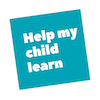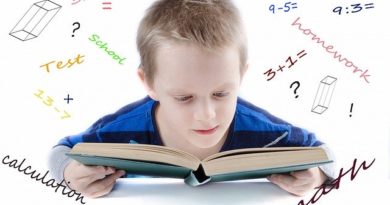How to Look Inside of the Top 7 Learning Disability Diagnoses
How much do you understand your child’s diagnosis?
If your child was recently diagnosed, you probably don’t understand much of the diagnosis. But it’s important that you learn.
Many parents say that understanding their child’s diagnosis is similar to peeling an onion. And for others, the big learning disability word:
Like Dyslexia,
ADHD, or
Sensory Integration
just sits on the counter and blinks at them.
We started this website to save you time and make you more effective. We’re going to try to shorten the amount of time that it will take for you to start understanding your child’s diagnosis. The information in this post, for example, often takes parents years to discover.
Go to the bottom of this post to see what’s inside of your child’s diagnosis.
But let’s talk about cognitive weaknesses first
Barbara Arrowsmith, founder of the Arrowsmith school, tells us that each person, no matter how bright, has one to three different cognitive weaknesses. Perhaps you don’t like math, or you need to write things down or you forget them. We simply work around our weaknesses in everyday life.
But when a child has learning differences, they are hit with more than just two or three areas of weakness. In LD children, multiple learning weaknesses overlap, so that it’s not always obvious which problem is caused by which weakness. This is why we have our children formally diagnosed. When our children are diagnosed, the diagnostician works to identify the various weaknesses. And then they issue a diagnosis that the weaknesses fall into.
So What is a Diagnosis?
A diagnosis is a collection of weaknesses. If your child has weaknesses that fall into two different categories, then your child is given two different diagnoses.
There’s a tremendous potential for a child with one LD to also be diagnosed with another. That’s called comorbidity. About 45% of children with ADHD, for example, are also diagnosed with dyslexia. There’s more information about LD statistics here.
Other diagnoses look very similar. We’ve included the diagnoses ADHD and Executive Function Disorder, because many children who have immature brains or LDs also have executive function problems. Problems getting things done might be due to working memory issues, instead of problems focusing. It’s important to take a look.
Many parents get very upset at a second diagnosis, because they’re thinking of a LD as a type of disease or sickness. It’s not. It’s simply a collection of weaknesses that all affect a particular type of thinking. And once you understand the weaknesses, you can do three things:
- You can do exercises or training to strengthen some of the weaknesses
- You can teach your child to use new tools or techniques, so that they can learn with their weaknesses
- You can realize that some “weaknesses” are brain differences that won’t change, and you can teach methods for accommodating, or working around differences. SEE OUR list of accommodations.
Remember: Every time you choose to write down a list because your memory isn’t great, or to dictate a message, YOU’re accommodating your own wants and weaknesses. And that’s OK.
Your Job
As a parent, it’s your job to understand three things.
- First, try to keep track of what’s actually difficult for your child to do at school and with homework. We’ll teach you more about how to observe. CLICK HERE to see a description of how to learn about your child’s LD challenges. If you know what’s difficult for your child and what’s easier, then you can prioritize how to help, and you can work to get accommodations that will make a big difference.
- Secondly, understand your child’s test results and diagnosis. When your child has an educational test, it’s the job of the doctor or tester to sit down and explain the results to the parent. Of course, we parents know nothing at all about the diagnosis at that point, so all we can do is take notes and nod. We want to fix that. CLICK HERE to learn how you can look inside of a LD diagnosis.
- And third, the testing specialist should be able to tell you what type of therapy, exercises, tutoring, or support will help your child with their diagnosis. We find that too many doctors simply put a post-it note on a child’s forehead, shake hands, and walk out. Nope. Try to find reputable testers and specialists, who live near you, and then make sure that you ask them for references, suggestions, and a treatment plan. CLICK HERE to DOWNLOAD a list of specialists. This website helps as well, by bringing you wisdom and ideas from all sorts of parents, professionals, and specialists. We help you generate your own treatment plan.
Here are links to documents that you can use when you talk with your doctor. If your doctor says that your child has dyslexia, pull the diagram out. Look at the weaknesses on the diagram. Which of those weaknesses does the tester say that your child has? Click on the bottom of each page to download the page, and take notes on it. Which weakness is most extreme? Often, test results will tell you what percentile your child is. For example, your child’s comprehension may be 80th %tile, decoding is 40th %tile, but working memory is only 20th %tile. Write down the numbers, because it tells you information that you can use.
Remember, 50th %tile is standard, so you don’t to worry about that. But much lower is something that you need to either work to strengthen, or to accommodate.
Every LD child has a totally unique brain. When you discover your child’s strengths and weaknesses, you can work more closely with the school or a tutor to get your child the support that they need. And you’ll be able to do it intentionally.
![]()
How to Look Inside the Top 7 Learning Disability Diagnoses
| Dyslexia -Reading | What’s Inside Your Child’s Dyslexia Diagnosis? |
| Dysgraphia -Handwriting | What’s Inside Your Child’s Dysgraphia Diagnosis? |
| ADHD -Focus and Organization | What’s Inside Your Child’s ADHD Diagnosis? |
| Sensory Processing Disorder -Under-or over-sensitive to stimulation — tied to brain maturity | What’s Inside Your Child’s Sensory Processing Disorder Diagnosis? |
| Executive Function Disorder -The ability to set goals, organize, and get things done. Tied to things like working memory | What’s Inside Your Child’s Executive Function Disorder Diagnosis? |
| Auditory Processing Disorder -The brain’s ability to translate sounds into meaningful speech and understand it | What’s Inside Your Child’s Auditory Processing Disorder Diagnosis? |
| Social Skills Problems -Up to 75% of LD children have some sort of social skills challenge | What’s Inside Your Child’s Social Skills Diagnosis? |
Understanding which weaknesses your child has will let you prioritize how to get support and accommodations.










Pingback:Journeying on the Pathway to Success: An Overview - Help My Child Learn
Pingback:What's Inside of Social Skills Challenges? - Help My Child Learn
Pingback:What's inside of an Auditory Processing Diagnosis? - Help My Child Learn
Pingback:What's inside of a Sensory Processing Disorder Diagnosis? - Help My Child Learn
Pingback:What's inside of a Dyscalculia (Math) Diagnosis? - Help My Child Learn
Pingback:What's Inside of an ADHD Diagnosis? - Help My Child Learn
Pingback:What's inside of a Dysgraphia Diagnosis? (Handwriting) - Help My Child Learn
Pingback:What's inside of a Dyslexia Diagnosis? - Help My Child Learn
Pingback:Becoming an Executive Parent for your LD Child - Help My Child Learn
Pingback:Journey 2: Understand Your Child's Diagnosis - Help My Child Learn